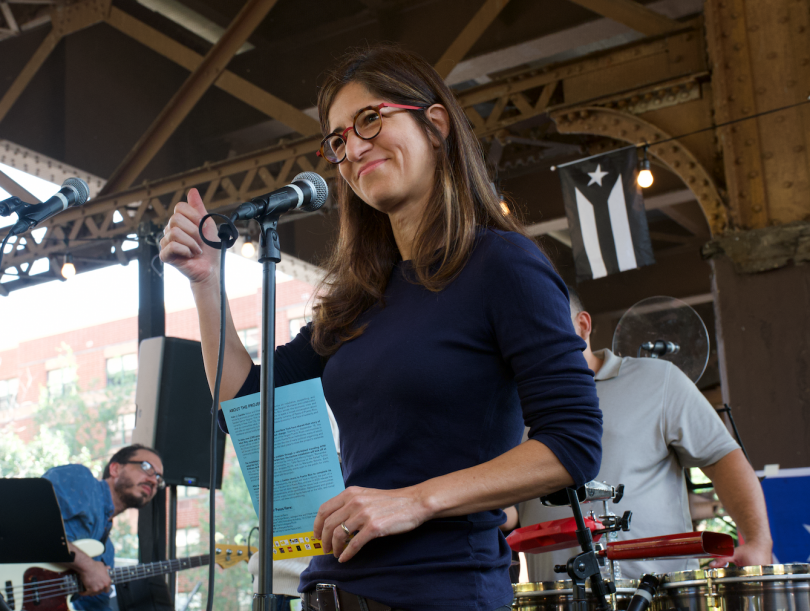In the Heights,” adapted from Lin-Manuel Miranda’s Tony-winning musical, which was first staged in 2005, is a big piñata filled with lots of goodies. It has many musical numbers in many different styles, evoking everything from Jerome Robbins’s choreography for “West Side Story” to Busby Berkeley pool extravaganzas to Afro-Cuban dance. It also boasts a robust catalogue of musical genres, including salsa, merengue, bolero, flamenco, and hip-hop. For good measure, the film covers a longish list of challenges that many Latinos face: gentrification, housing discrimination, debt, the high cost of college tuition, racial profiling, and the failure to enact immigration reform. It even has a splash of magia. A couple pirouette on the side of a building, and dancing angels usher the matriarch Abuela Claudia (Olga Merediz, in the film’s best performance) into heaven on the subway.
Directed by Jon M. Chu (“Crazy Rich Asians”) and written by Pulitzer-winning playwright Quiara Alegría Hudes, “In the Heights” was made for a reported fifty-five million dollars, a high sum for a movie with a cast of mostly unknown Latino leads. The aesthetics of plenty is politically significant. In contrast to decades of dehumanizing discourse against Latino immigrants, “In the Heights” asserts that Latinos are not just labor but people with inner lives and ambitions. They may have one of the country’s lowest per-capita incomes, but their communities are as rich as any other group in history, ability, and tradition. If Latinos are rendered invisible by the state and media, then it’s not because they are lacking. They have so much to offer, in fact, that it can’t fit inside a Hollywood film.
But if the movie is too much, it is also not enough. “In the Heights” tells the stories of various residents of the predominantly Dominican neighborhood of Washington Heights as they pursue their American dreams. Its main plot focusses on Usnavi (Anthony Ramos), a young Dominican-American bodega owner who longs to revive his father’s bar in the old country. Despite the multiple threads, the film does not fully develop its characters and their circumstances in complex—or, at times, even credible—ways. “In the Heights” fails many of the same tests that Hollywood standard fare usually does, but it often fails better and differently. The convergence of the film’s achievements—a nearly all Latino and Black cast, ambitious choreography, a major promotion campaign—and its limitations has enabled an unusually vigorous public conversation about Latinos in the United States.
Rest of article can be found at the New Yorker.

